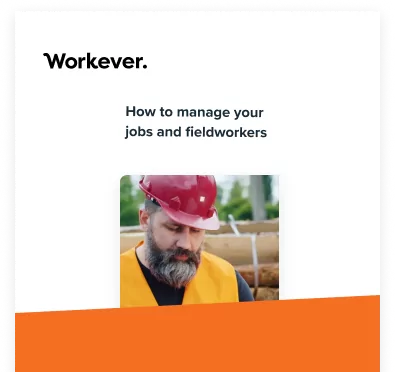Since the pandemic, tradespeople haven’t had a chance to catch their breath. As well as projects that could resume after restrictions eased, tradespeople have also been helping the millions of property owners looking to improve their homes now that people are spending more time living and working at home.
While tradespeople are still navigating high demand and the trade skills shortage, which makes expanding your support team difficult, another issue is becoming more apparent: the material supply issues.
Currently, two-thirds of tradespeople in the UK are experiencing long delays in accessing construction materials. The combination of the pandemic and Brexit has created a perfect storm for supply issues, rising costs and logistical difficulties.
So what’s really causing the issues for tradespeople?
Material Supply Issues And Brexit
Perhaps the key area affecting and disrupting Tradespeople is the knock-on and supply chain shortages across staffing and materials. Let’s take a look at how and why this might affect your field service business:

Lorry Driver Shortage
In 2021, Britain has lost over 15,000 European drivers as a direct cause of Brexit. Many HGV drivers found positions across Europe due to visa restrictions in place in the UK after Britain left the single market.
Before this, there was already a shortage of drivers, according to the Road Haulage Association. However, Brexit has exacerbated the situation. Now, with a lack of HGV drivers, there is a difficult supply chain issue in place, as it’s now harder to find drivers able to transport construction materials across the country.

European Demand
The UK construction industry heavily relies on materials from the EU. In fact, 60% of the imported materials used in the UK construction industry comes from the European Union, according to the Construction Leadership Council.
For homebuilders, this demand is higher as 80% of softwood used for building projects comes from the EU. This increases to 90% of the softwood used for newbuilds.
While the UK still has this high demand from the EU, other European countries have also increased their demand. Now, due to the delayed UK-EU trade deal and general Brexit friction, it is no surprise that the UK is further down the pecking order when it comes to supply.
Before this, there was already a shortage of drivers, according to the Road Haulage Association. However, Brexit has exacerbated the situation. Now, with a lack of HGV drivers, there is a difficult supply chain issue in place, as it’s now harder to find drivers able to transport construction materials across the country.

Scarce Materials
Added to this is the fact that materials are more scarce. A warm winter 2020 affected Scandinavia’s timber production, leading to a shortage.
The short supply of scarce materials has then caused a price hike. Already the Office for National Statistics has reported a 7-8% increase in raw materials. However, they also expect prices to double on high-demand materials such as timber as supply runs low. Currently, by the time timber makes its way to merchants, tradespeople are finding costs are at least 50% higher than expected.
It is not just the short supply of materials that is causing a price hike; shipping charges are also raising the cost of projects too.

Shipping Costs
The pandemic has caused a shortage of shipping containers, which has significantly increased the cost of transport. For example, a 40ft shipping container costs $8,300 in 2021, compared to just $1,500 in 2020.
However, shipping costs are also increasing due to Brexit. The new customs, taxes and checkpoints for goods entering the UK from the EU has not only caused delays to projects but hiked the price up too.
As global demand is likely to remain high for shipping post-pandemic, the UK can expect shipping prices to remain high while supply lines remain lengthened.
Which Supply Materials Are Affected?
Research by the Department for Business, Energy and Industrial Strategy has found that construction materials have, on average, risen by 6.7% for new builds and 5.2% for construction materials compared to data from 2020.
However, some of the specific materials that have significant supply issues include:
- Timber – Prices have jumped by 64% since June 2020. In September 2021, prices jumped by 23% in a single month.
- Roof Tiles – Lead times for concrete tiles are now stretched to an average of 30 weeks.
- Steel – High demand for steel has stopped producers from accepting future orders.
- Paints – The high cost of shipping to the UK has meant supply is restricted.
- Plaster – Expect lengthy lead times for plaster as well as an average price increase of around 7%.
- Cement – The lack of domestic haulage from fewer HGV drivers is causing shortages and price hikes.
- Insulation – due to import tariffs and containers, insulation costs are rising by up to a third.
What’s The Knock-On Effect?
As well as disgruntled homeowners waiting for outstanding home projects to be complete, the Brexit impact on material supplies is causing wider issues on the UK economy. Currently, construction projects make up 6% of the UK economy.
As Brexit is causing material shortages and supply chain issues, projects are taking longer to complete, resulting in a lower output. This lower output in construction projects has a knock-on effect on lowering the economic output for the country.
However, the demand for construction and tradespeople is high. This could be the industry that helps to stimulate the economy in post-pandemic recovery. But, until there are streamlined logistics and access to materials, the whole industry will likely struggle.
For tradespeople, the focus now is to manage your supply chain to help to navigate the shortages. At the same time, it is important to keep customers informed of lengthy lead times that are out of your control, while project scheduling can help manage their expectations.

